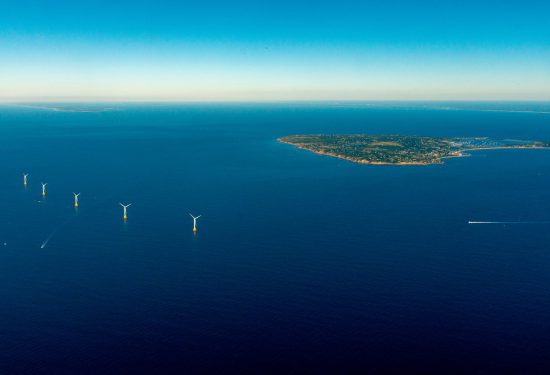
On Monday, energy company Deepwater Wind announced that its wind farm three miles off the coast of Block Island, Rhode Island, has the all-clear to sell electricity to the regional power grid.
The Block Island Wind Farm is the first offshore wind energy plant in the US, with 30 MW of installed capacity. Deepwater Wind is slowly ramping up energy output and still must provide additional paperwork to the Rhode Island Coastal Resources Management Council, but the executive director of that organization, Grover Fugate, told the Providence Journal, “we don't anticipate any major issues” to getting the wind farm fully online.The one hitch in the Deepwater plan is that one of the five turbines was recently damaged when a drill bit was left in a critical part of turbine. According to the Providence Journal, "the bit had caused damage to an unspecified number of the 128 magnet modules that line the circular generator and are critical to producing energy." Although the magnet modules can apparently be replaced easily, Deepwater needs to have the components shipped from France, where General Electric, the manufacturer of the wind turbines, makes them.
For now, four turbines capable of churning out 6 MW of power each are operational. After completing the assembly of turbines in August, Deepwater spent the next several months testing the turbines and periodically delivering power to National Grid, the regional energy provider.
The Providence Journal notes that National Grid will pay Deepwater Wind 24.4 cents per kilowatt hour of power, with the price escalating over time to 47.9 cents per kilowatt hour. Because the residents of Block Island have some of the most expensive electricity rates in the nation, they will actually see energy savings, despite the price. Mainland Rhode Islanders, on the other hand, will pay an extra $1.07 per month on average.
In Europe, offshore wind farms are far more common than they are in the US, where land-based wind predominates. Offshore wind is more expensive than land-based wind plants because building the infrastructure, including submarine cables to get the power to land, is a significant cost. Still, offshore wind tends to be steadier, and offshore wind farms can be built much closer to major metropolitan areas than their land-based counterparts. In fact, ABC News notes that Deepwater Wind is currently negotiating with a utility to build a 15-turbine wind farm off Long Island's eastern coast.
reader comments
54